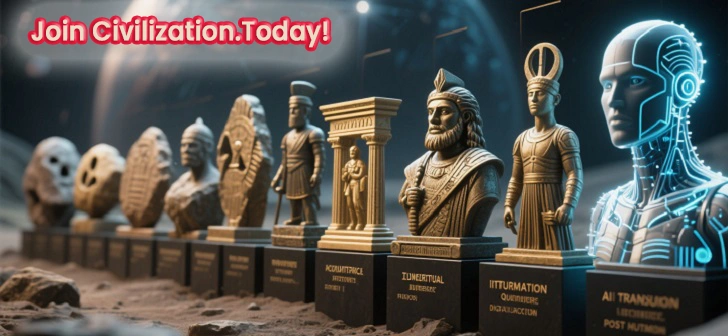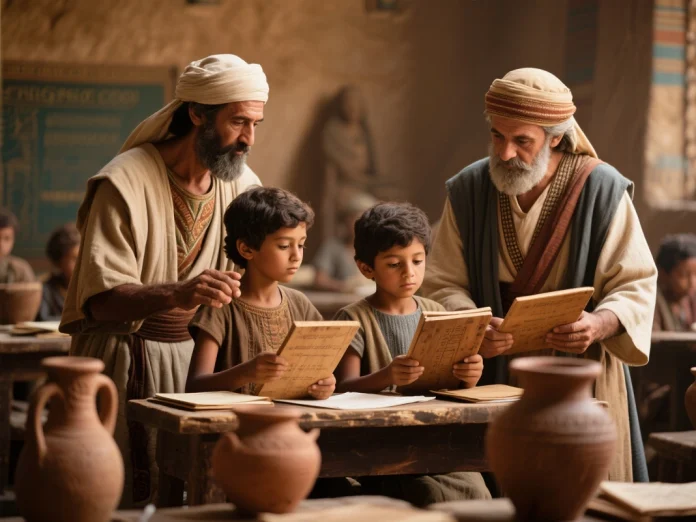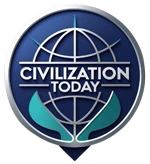When we think of schools today, we picture classrooms filled with desks, blackboards, textbooks, and teachers guiding curious minds. But the idea of formal education did not appear overnight. The origins of schools date back thousands of years, emerging in the earliest civilizations where teaching the young was essential for survival, culture, and governance. From the scribal schools of Mesopotamia to the philosophical academies of Greece, the story of how humans first taught structured knowledge is both fascinating and deeply connected to the progress of civilization.
In this article, we will explore The Origins of Schools, uncovering how ancient societies developed systems of education, why they mattered, and how they shaped the modern world.
The Birth of Education in Mesopotamia
The cradle of civilization, Mesopotamia, also gave birth to one of the earliest known schooling systems. Around 2000 BCE, the Sumerians established “edubbas” (scribal schools) where young boys—mostly from wealthy families—were trained to become scribes.
Writing was the key to administration, trade, and religion, and so scribes were highly respected. The curriculum was strict: students copied cuneiform tablets for hours, memorized complex symbols, and studied mathematics for accounting. Discipline was harsh, but the prestige of becoming a scribe made the effort worthwhile.
Thus, in Mesopotamia, The Origins of Schools were closely tied to bureaucracy and social hierarchy. Education was less about creativity and more about maintaining order in society.
Ancient Egypt: Schools of the Pharaohs
Egypt followed a similar pattern. Education there was centered around preparing young boys for roles in government, temple administration, and engineering. Hieroglyphics, mathematics, and religious texts were taught to ensure the continuity of pharaonic power.
Egyptian schools were often attached to temples, where priests doubled as teachers. Learning was considered sacred, and literacy was a privilege of the elite. The training of architects and engineers who built the pyramids and temples was also a form of specialized schooling that shaped history forever.
Here, the origins of schools intersected with religion, showing how knowledge was seen as divine wisdom reserved for the chosen few.
India: Gurukulas and Spiritual Learning
In ancient India, education was not confined to government or trade but was deeply connected to spirituality. The Gurukula system was one of the earliest forms of schooling, where students lived with their teacher (guru) in ashrams.
Unlike Mesopotamia or Egypt, education in India emphasized philosophy, ethics, mathematics, astronomy, and even medicine. Sanskrit texts like the Vedas and Upanishads formed the foundation of learning. Importantly, this system taught discipline, humility, and the idea that education was a lifelong journey.
The Indian approach showed that learning was more than professional training—it was a path to enlightenment.
Ancient China: The Confucian Model
No discussion of education is complete without ancient China. As early as the Zhou Dynasty (1046–256 BCE), schools were established to prepare future officials for imperial service.
Confucius (551–479 BCE) revolutionized the idea of schooling by advocating that education should be available to anyone willing to learn, not just the elite. His teachings on morality, family loyalty, and governance shaped the curriculum for centuries.
China’s imperial examination system, which later developed, was one of the first examples of merit-based education. Here, schools’ orogin became tied to social mobility, making knowledge a powerful equalizer.
Greece: The Birthplace of Liberal Education
Ancient Greece introduced a different vision of schooling. In Athens, education focused not only on practical skills but also on philosophy, rhetoric, arts, and physical training. The goal was to create well-rounded citizens capable of contributing to democracy.
Schools like Plato’s Academy and Aristotle’s Lyceum went beyond rote learning, encouraging debate, logic, and critical thinking. Unlike the rigid memorization of Mesopotamian schools, Greek education promoted questioning, which laid the foundation for modern sciences and humanities.
In Greece, the dawn of schools were about freedom of thought and civic responsibility, ideals that still resonate today.
Rome: Practical Education for Empire Building
The Romans inherited much from Greek education but adapted it for their vast empire. Roman schools emphasized law, rhetoric, engineering, and military strategy—skills necessary for governance and conquest.
Wealthy Romans hired private tutors, often Greek slaves, to educate their children. For the masses, basic literacy and numeracy were taught in local schools. Unlike Greece, Rome was more pragmatic, focusing on education as a tool for expanding and maintaining imperial power.
This stage of schools dawn shows how education evolved to meet the needs of empire.
Comparing the Ancient Systems
Each civilization’s approach to schooling reveals its values:
- Mesopotamia & Egypt. Education as a privilege tied to administration and religion.
- India. Education as a spiritual and philosophical pursuit.
- China. Education as a path to moral leadership and social mobility.
- Greece. Education as a way to nurture free thinkers and citizens.
- Rome. Education as a practical tool for empire building.
Together, these traditions formed the foundation of global education, influencing how we learn even today.
Lasting Legacy of Ancient Schools
Modern schools may look nothing like ancient temples, academies, or gurukulas, but their DNA is still present:
- The structured curriculum of Mesopotamia lives on in standardized subjects.
- The moral philosophy of Confucian China still shapes Asian education.
- The critical thinking of Greece inspires liberal arts programs worldwide.
- The practical approach of Rome is echoed in vocational and professional training.
When we trace the origins of many schools we see how humanity transformed knowledge into a system that has survived across centuries.
Conclusion
The story of the beginning of schools is also the story of human progress. From clay tablets to digital classrooms, the purpose of education has remained the same: to prepare the next generation not only to survive but to thrive. Ancient civilizations may have taught in temples, palaces, and academies, but their lessons continue to echo in every classroom today.
Education has always been more than memorization—it is a bridge between the past, present, and future. By understanding how the ancients taught the young, we gain a deeper appreciation for the power of knowledge in shaping civilizations.



